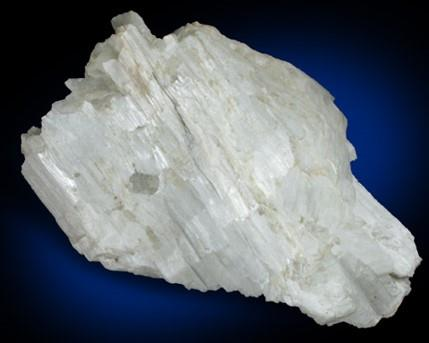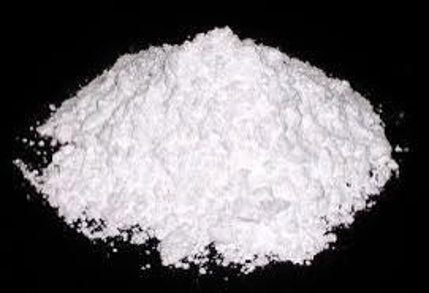What Is Wollastonite ?
Wollastonite is a naturally-occurring, calcium metasilicate (CaSiO3) mineral with a theoretical composition of 48.3% CaO and 51.7% SiO2, and an acicular (needle-like) particle shape. It is usually white and can withstand temperatures up to 1540°C.
Geology
Wollastonite is formed when impure limestone or dolostone undergo high temperature and pressure changes, sometimes in the presence of silica-bearing fluids, as in skarns or contact metamorphic rocks.
Physical Properties
• High brightness
• Low moisture and oil absorption
• Low water solubility
• Basicity
• Low volatile content
• High melting point
• Acicular crystal structure
• Relatively high hardness (4.5 on Mohs’ scale)

Wollastonite Cluster
Principle Uses
Construction
Wollastonite improves flexural and impact strengths. It has found application as a substitute for asbestos in fire-resistant building products and is an excellent lightweight reinforcing filler for cement boards.
Paint & Coatings
Fine acicular particles act as a flattening agent and allows paint to settle with uniform thickness, better corrosion and barrier properties, and improve thermal stability at high temperatures. High brightness and whiteness reduce pigment load and typically very low oil absorption, reduces the volume of binder required and contributes to reduced pigment costs.
Plastics
Wollastonite improves the durability of the composite due to its acicular structure. It also enhances electrical insulating properties, adds fire resistance, and improves dimensional stability, making it an ideal reinforcement in thermoplastics, engineering alloys, thermosets and elastomers. Wollastonite also improves knit/weld line strength and prevents splaying during injection moulding.
Adhesives & Sealings
Wollastonite is a highly effective functional filler in adhesive and sealant applications, including structural, high temperature, pressure sensitive, hot melt, heat activated and UV curable adhesives and sealants.
Rubber
Wollastonite is used to improve physical properties in gaskets, belts, plugs, O-rings, seals and moulded parts.
Ceramics
Wollastonite can be used in a variety of ceramic applications including ceramic glazes and bodies, enamels, frits, fluxes and in sanitary-ware. This industrial mineral is a source of CaO to alkaline glaze formulations to improve the strength of the glaze .
Agricultural Uses
Wollastonite has a wide range of agricultural uses thanks to its unique organic makeup – it provides a source of plant-available silicate, carbon neutral calcium, and magnesium as well as many other beneficial trace elements and micro-nutrients.
Wollastonite has specifically been shown to be beneficial to numerous plants and crops in a variety of important ways, including helping to promote healthy cell growth, reducing pests and eliminating powdery mildew. Wollastonite’s unique properties allow it to break down into calcium, magnesium and silicate in a highly bio-available form that balances soil PH throughout the growth cycle. This allows the plants to uptake silicic acid and promotes strong cell walls that better resist insect feeding and spore penetration, which in turn supports increased plant growth and elevated product yields. In research trials powdery mildew was virtually undetectable with a Wollastonite admixture above 10%; this also correlated with sharp reductions in the presence of thrips and fungus gnats (insect pests with a sub-soil life phase) in which the Wollastonite crystals lacerate and impale their soft bodies. At a microscopic level, Wollastonite’s needle-like structure penetrates soft-bodied insect larvae and pupae, interrupting the life cycle without the use of pesticides.
Wollastonite’s overall ability to improve plant stress tolerance, increase crop yields and simplify crop management makes it the perfect choice for a greener agricultural future.

Crushed End Product

